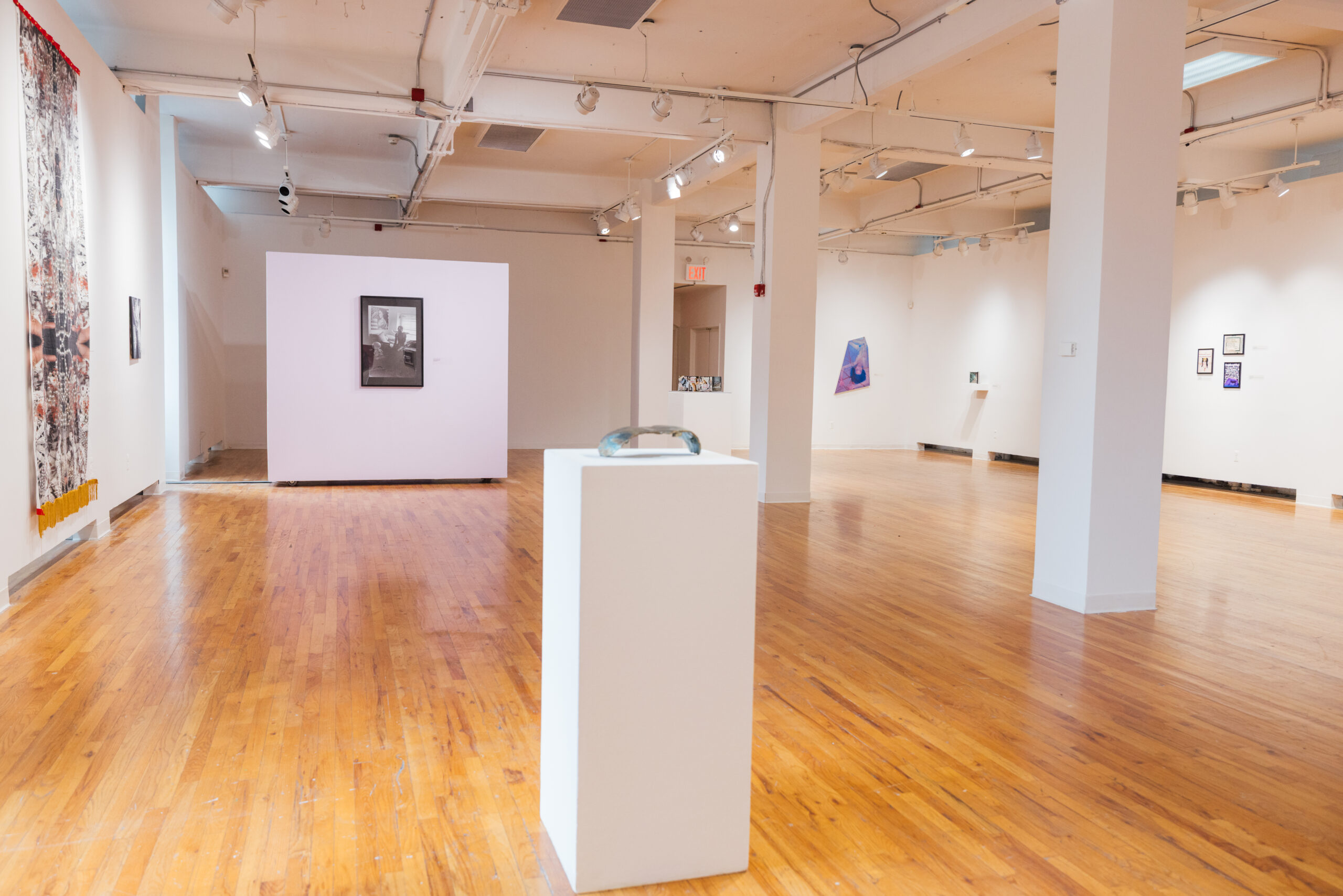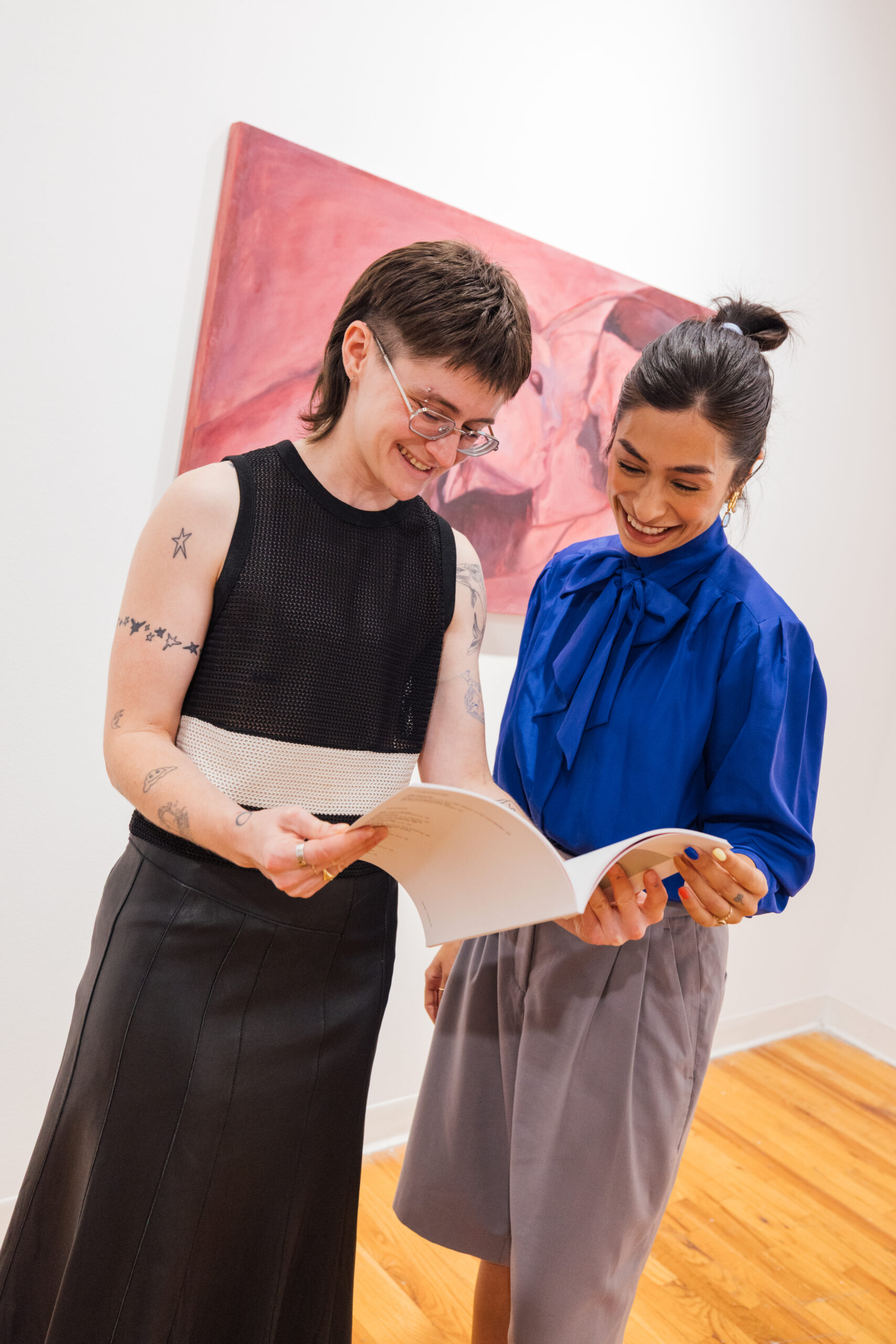On a glowing afternoon in September, Pratt’s Brooklyn campus hummed with energy as curators Dylan Kaleikaumaka Hill, MA History of Art and Design ’23, and Olli Toppeta, MS Library and Information Science; MA History of Art and Design ’22, walked visitors through Exquisite Relations at The Rubelle and Norman Schafler Gallery. The multidisciplinary exhibition, presented by the School of Art in collaboration with Pratt’s Department of Exhibitions, comprised painting, sculpture, photography, film, and performance by Pratt students and alumni. This is the fourth annual School of Art student and alumni exhibition to pose questions about the formation of cultural identity, with this year’s iteration presenting work that exists within and explores the queer experience.
Dean of the School of Art Jorge Oliver invited History of Art and Design Chair Sarah A. Lichtman to nominate alumni to serve as this year’s curators. When Lichtman approached Hill and Toppeta with the opportunity, both alumni were excited to have a chance to meaningfully reconnect with the Pratt community, engage with their own curatorial practice, and elevate the work of talented LGBTQIA+ artists and designers during a challenging time. “It feels so vital to me to be able to platform queer artists, giving them the space to ‘speak’ on their humanity, their defiance, and their visions,” said Toppeta.
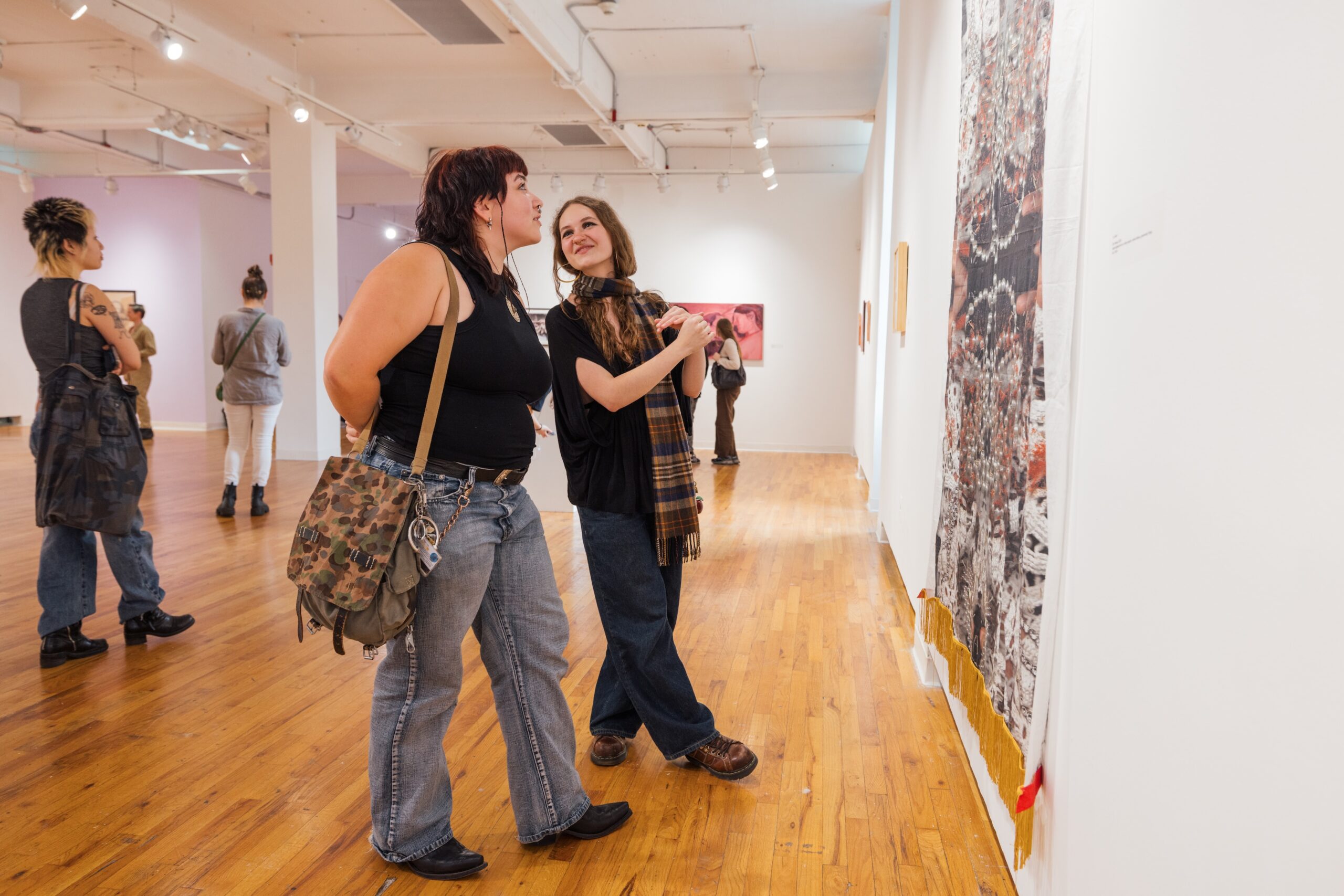
The show’s title plays on the surrealist concept of the “exquisite corpse,” a collaborative and intuitive game that involves building blindly on past works to create something entirely new and unexpected. The concept resonates with many works in this exhibition, including painting, sculpture, photography, film, and performance from a wide and interconnected network of Pratt faculty, alumni, and students. It also speaks to the deep process of collaboration involved in making the show, as the curators—based on opposite sides of the country—passed ideas back and forth. An exquisite corpse, much like an exhibition, is greater than the sum of its parts. “This was a great exercise in releasing control and allowing space for a project to grow in unexpected but lovely directions,” reflected Hill.
Cassils, associate professor of sculpture and integrated practices and an accomplished interdisciplinary artist, supervised the curatorial process, offering a unique opportunity for hands-on mentorship. Cassils’ own work reflects how bodies are shaped by external forces and social expectations, contemplating the history(s) of LGBTQIA+ violence, representation, struggle, survival, and empowerment, making them an ideal faculty supervisor for this exhibition.
“It was initially quite intimidating to get to work with someone of their caliber, but they are such a wellspring of knowledge and came to the project with such warmth and enthusiasm,” said Hill, adding that Cassils provided some of the critical theoretical readings and helped build the framework for the show.
Cassils also enjoyed guiding the curators, helping them articulate strategies that embrace a hybrid and fluid concept of queerness. In addition to working with the curators, Cassils invited international artists Dorian Wood and Viva Ruiz to conduct workshops as part of the exhibition programming. “These programs dovetailed further into the concepts explored in Exquisite Relations, with themes such as the power of voice and bodily autonomy as it pertains to both trans and reproductive justice rights,” said Cassils.
For Hill, who is currently the Meyerhoff-Becker Curatorial Fellow with the Baltimore Museum of Art’s Contemporary Art Department, the show was an opportunity to reconnect with former classmate Toppeta after they both graduated from their master’s program at Pratt. Toppeta is a librarian, curator, and community organizer in Seattle, WA, where they work as an academic librarian and professor. For the curators, their collaborative process enhanced their experience. “Olli has heard me say this a million times at this point, but reconnecting with them was one of my favorite parts of getting to work on this show,” said Hill. “I remember being so intimidated by how well they were able to articulate their ideas in class and was a big fan of their research… Coming out of this process not only as collaborators but as friends has been such a win.” Toppeta echoed this sentiment, saying, “I hope that future curators of this show have just an easy and fun time working with a former classmate of theirs and rebuilding connections.”
In addition to working together, the curators also had a chance to form relationships with current Pratt students and fellow alumni, building on the common ground of sharing a Pratt education. For Hill and Toppeta, working closely with the artists and learning about their practices helped inform how best to present their work in the exhibition.
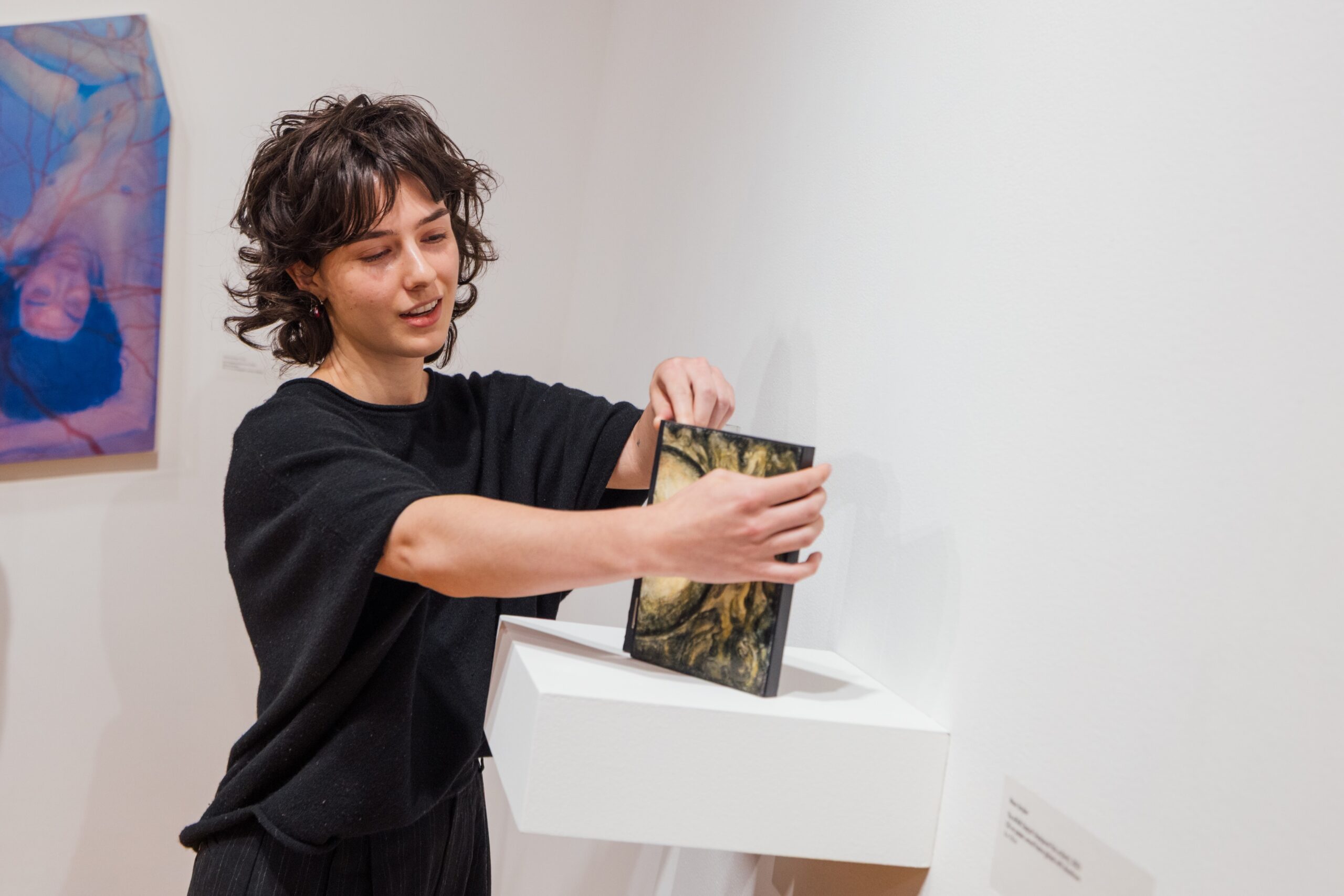
A highlight of the exhibition was how it featured students from across different areas of the Institute. “There isn’t a single trajectory to becoming an artist, just like there isn’t a monolithic queer experience, so it was important to feature works by students who not only studied fine art but also conservation, library science, education, and other fields,” said Hill.
Wren Stryker, BFA History of Art and Design ’26, exhibited their piece The AFAB Diptych (Assigned Fish at Birth) (2023), a diptych altarpiece of grotesque fish women. Stryker appreciated working with the curators to represent their painting in a group exhibition context, noting how, “They put everything in conversation with each other in a representative and illuminating manner.”
Lo Smith, MFA Fine Arts (Printmaking) ’26, also echoed that sentiment. They called the experience a “generative, intentional, and caring dynamic.” Smith was also encouraged by Cassils to put on a performance in collaboration with artist and activist Viva Ruiz called “EVERYTHING IS EVERYTHING” as part of the exhibition’s programming.
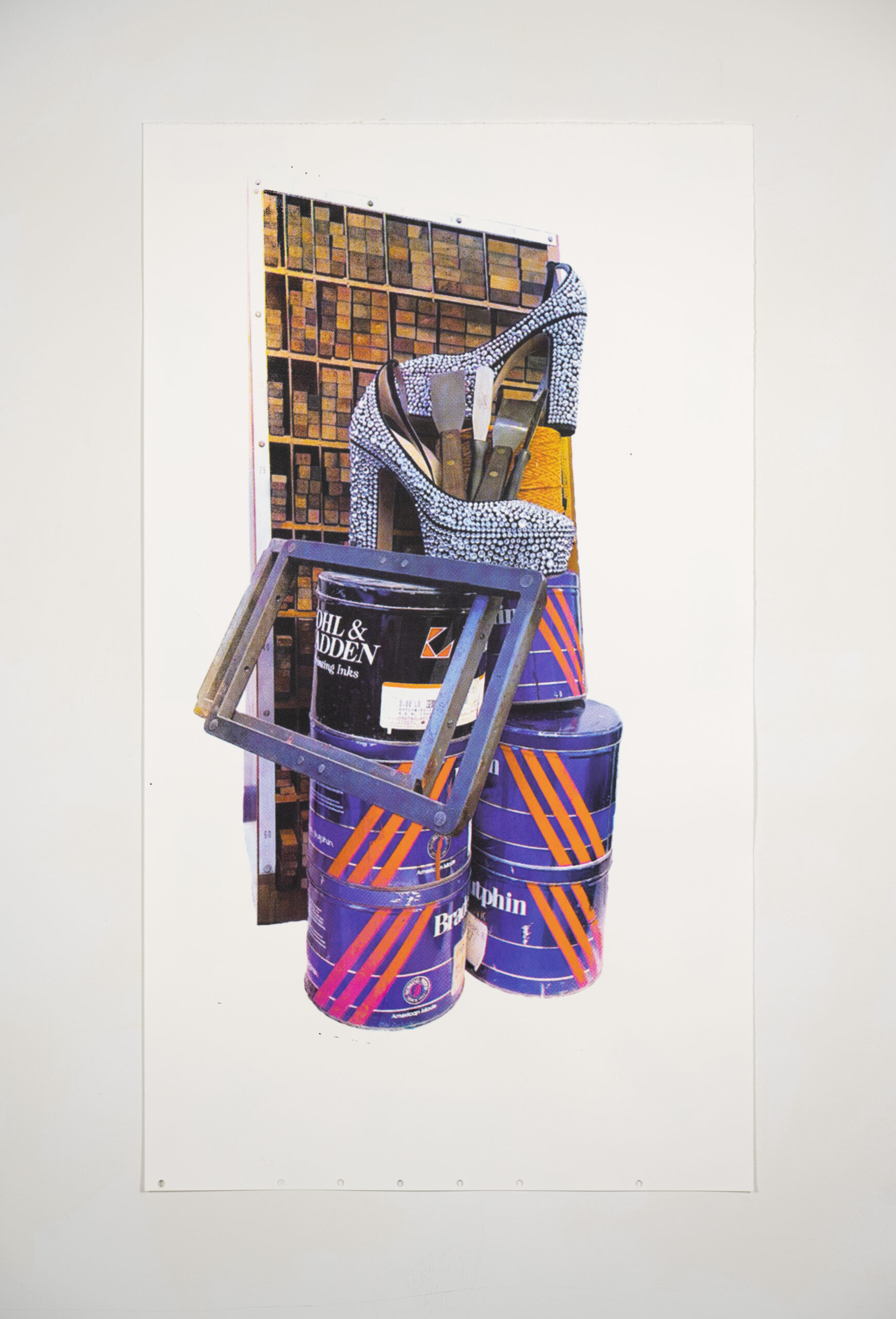
Exquisite Relations is a story about the Pratt community. Even after graduation, the opportunities to collaborate with peers, to exhibit work, to curate exhibitions, and to learn from faculty mentors continue. Such experiences help form a network where professional and personal relationships flourish. “Pratt gave me a lot of academic freedom,” said Toppeta, “which in turn fed my curiosities. I see very clearly the ways that informs the opportunities I seek and in turn that also seek me out.”
